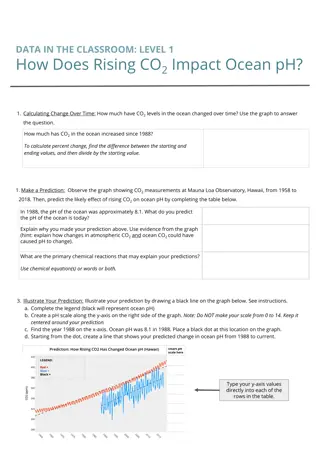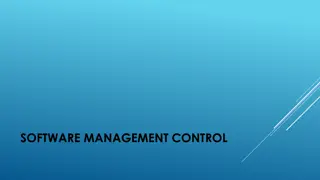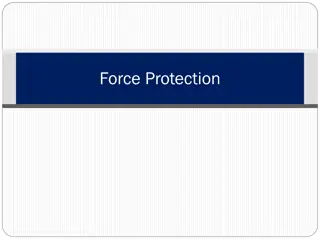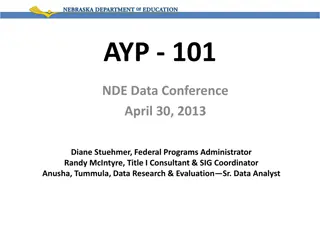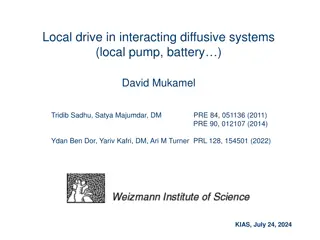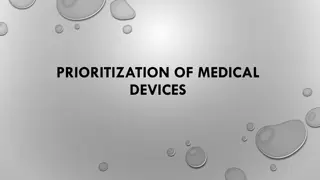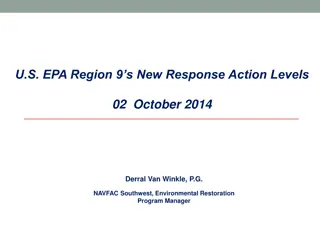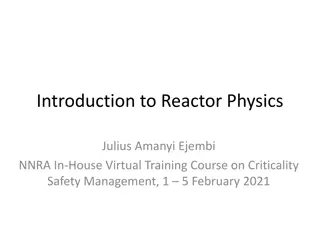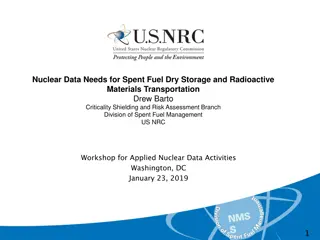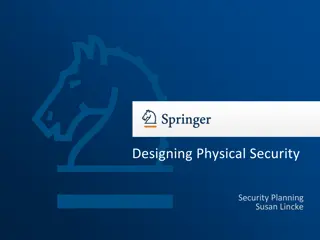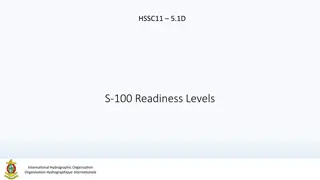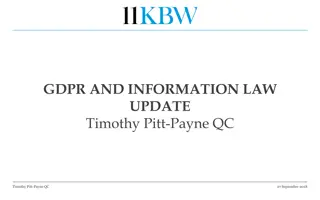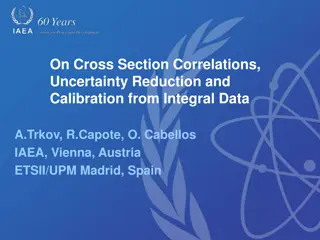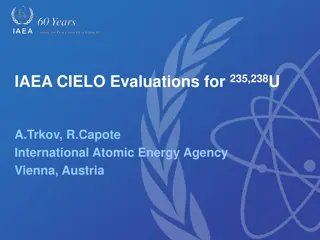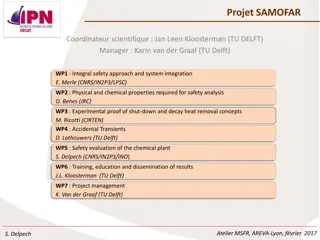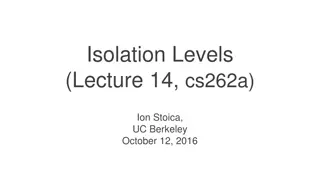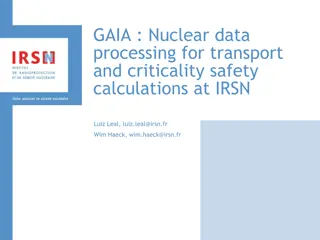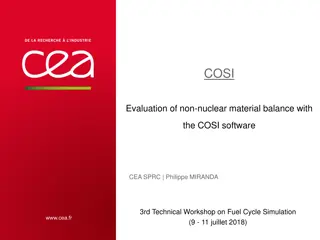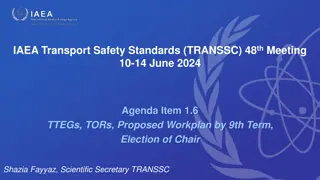Module C2: Eco-Design – Energy Applications
Explore eco-design concepts for energy storage systems, focusing on recycling approaches and material criticality. Learn to develop sustainable energy solutions and adhere to ecodesign regulations. Popular
1 views • 17 slides
Understanding Manufacturing Readiness Levels (MRLs) in Defense Technology
Manufacturing Readiness Levels (MRLs) are a vital tool in assessing the manufacturing maturity and associated risks of technology and products in defense acquisitions. They provide decision-makers with a common understanding of the maturity levels to support informed decisions throughout the acquisi
1 views • 12 slides
Understanding Special Monthly Compensation (SMC) Levels and Benefits
Special Monthly Compensation (SMC) offers various levels of benefits based on the extent of service-related disabilities, such as anatomical losses, blindness, and aid and attendance needs. Veterans may receive different SMC levels like SMC-K, L, M, N, and O depending on the severity and combination
1 views • 42 slides
Dissolved Oxygen Measurements and Factors Affecting Oxygen Levels
Understanding the importance of dissolved oxygen in water is crucial for the survival of aquatic plants and animals. Factors such as chemical reactions, temperature, pressure, and light penetration influence oxygen levels. The Winkler method is commonly used for dissolved oxygen measurements. This m
4 views • 11 slides
Case Study: Managing High HbA1c and Normal Fasting Glucose Levels
A case study discusses a 69-year-old woman with a history of stable diabetes facing elevated HbA1c levels despite normal fasting glucose. Initial investigations, including a day curve test, reveal high postprandial glucose levels. The analysis leads to identifying iron deficiency anemia, prompting f
9 views • 22 slides
Ecosystem for Micro and Small Satellites Based on 3U-ADHA Modules
This presentation discusses the development of an ecosystem for micro and small satellites using 3U-ADHA modules and units. It covers the background, mission criticality classes, small satellite avionics needs, and proposes a standardized modular system for small satellites. The overview includes ex
0 views • 17 slides
Understanding Ocean pH Changes Due to Rising CO2 Levels
Explore the impact of rising CO2 levels on ocean pH through data analysis, predictions, and comparisons. Learn how to calculate changes over time, predict pH levels, and understand the processes influencing ocean acidification at different locations. Dive into levels ranging from measuring changes i
0 views • 6 slides
Aircraft Software Management and Control
Software management and control in aircraft systems are crucial for ensuring safe operations. This involves the classification of software based on criticality levels, certification requirements, and examples of software applications. Understanding the importance of following correct procedures for
0 views • 24 slides
Understanding Force Protection and FPCON Levels in the US Military
Force Protection (FP) involves preventive measures in the US military to mitigate hostile actions. FPCON is a system to respond to terrorist threats against military facilities by determining security levels. FPCON levels vary from Normal to Delta based on the assessed threat level. The purpose of F
1 views • 13 slides
Managing Blood Sugar Levels at Home for Low/No Vision
Explore the importance of monitoring blood glucose levels at home for individuals with low/no vision, learn about talking blood glucose meters, and make continuous glucose monitors accessible. Understand why maintaining blood sugar levels is crucial to prevent complications in diabetes, and get tips
2 views • 25 slides
Hosting a Staff Briefing About T Levels
This slide deck, designed by the DfE T Levels Team, is a resource for schools/colleges conducting a staff briefing on T Levels. It aims to generate interest and positivity among staff about T Levels, providing a customizable presentation that can be delivered in 20-30 minutes. The deck includes note
1 views • 29 slides
Diagnostic Reference Levels in Medical Imaging and Radiation Protection
The concept of Diagnostic Reference Levels (DRLs) is crucial in evaluating the amount of ionizing radiation used in medical imaging procedures. DRLs help determine if radiation levels are appropriate and need optimization. Authorized bodies establish numerical DRL values as advisory guidelines. Loca
1 views • 26 slides
The Critical Role of Human Capital in Economic Growth: A Review
Literature highlights the significance of human capital formation in driving economic growth and achieving macroeconomic objectives. Human capital accumulation enhances productivity, reduces unemployment, poverty, and inequality, underscoring the need for investments in education, health, and job tr
0 views • 25 slides
Securing IT Infrastructure at Exeter University
Exeter IT Secure by Design is a comprehensive approach to IT security at the University, focusing on developing robust security measures, integrating security into services by design, ensuring compliance, and managing risks effectively. The secure-by-design process helps in identifying security obje
0 views • 11 slides
Understanding T Levels in Higher Education
T Levels are a new type of two-year technical education courses designed for 16-19 year-olds, focusing on a blend of classroom learning and industry experience to prepare students for skilled employment or further study. Developed in collaboration with employers, T Levels offer a more rigorous and s
1 views • 14 slides
Understanding Low Testosterone Levels and Treatment Options for Men
Testosterone is a vital steroid hormone that plays a key role in the development of male characteristics. Low testosterone levels can lead to various health effects, including decreased muscle mass, bone density, and libido. Testosterone replacement therapy (TRT) is commonly used to treat males with
0 views • 36 slides
Understanding AYP in Education: Goals, Subgroups, and Performance Levels
AYP (Adequate Yearly Progress) is a measurement used in education to assess schools' performance in meeting academic standards. AYP is calculated at both building and district levels based on various subgroups such as race, income level, and English proficiency. This assessment includes recently arr
0 views • 57 slides
Local Drive in Interacting Diffusive Systems: Effects of a Pump on Steady State Properties
Driven systems exhibit long-range correlations in their steady state, contrasting equilibrium systems where particles are only locally correlated. This discussion focuses on the impact of a local drive (pump) in a diffusive fluid on its steady state properties, particularly at criticality. The study
0 views • 44 slides
Dark Side of the Afterglow: Complications in Dark Matter and Rare Events Searches
Exploring the challenges in detecting dark matter and rare events due to energy accumulation, excitation clustering, and avalanche relaxation events. Discusses issues such as low-energy background, ionization load on detectors, dual-phase detectors, universal scenarios of energy accumulation, and en
0 views • 15 slides
Investigation of Self-Organized Criticality Dynamics in Low Energy Threshold Ionization Detectors
Exploring the effects of energy accumulation in materials in detectors for coherent neutrino scatter, dark matter searches, and superconducting sensors and qubits. Focus on condensed matter effects, responsivity, background, and a hypothesized universal condensed matter mechanism. Touches on energy
0 views • 16 slides
Prioritization of Medical Devices: Criticality Assessment and Maintenance Strategies
Hospitals need to establish a robust Medical Equipment Management Program to ensure the safety and reliability of critical medical devices. Reliability-centered maintenance (RCM) and Failure Mode and Effect Analysis (FMEA) are essential processes to determine maintenance requirements. Asset critical
0 views • 33 slides
Guidelines on EPA Region 9 Response Action Levels for TCE Contamination
EPA Region 9 has established response action levels for TCE contamination, with tiered concentrations for different exposure scenarios. The State of California provides guidance aligned with these levels. DTSC concurs with EPA's residential and industrial response levels but recommends consultation
0 views • 10 slides
Introduction to Reactor Physics and Nuclear Fission
Explore the fundamentals of reactor physics, neutron interaction, and nuclear fission in this virtual training course on criticality safety management. Delve into the history of nuclear fission, symbolisms for atoms, and the significance of critical reactors like Fermi's Chicago Pile. Gain insights
0 views • 73 slides
Nuclear Data Needs for Spent Fuel Management Overview
Nuclear Data Needs for Spent Fuel Dry Storage and Radioactive Materials Transportation workshop held by US NRC discussed criticality safety, burnup credit, code validation, and organizational aspects in the field. The Division of Spent Fuel Management highlighted transportation and storage regulatio
0 views • 11 slides
Understanding Methodology in Research: A Comprehensive Guide
Exploring the essence of methodology in research, this guide delves into the significance of articulating research questions, challenging assumptions, and engaging in radical forms of enquiry like looking, listening, and reading. Highlighting the importance of criticality, it emphasizes the need to
0 views • 26 slides
Comprehensive Guide to Designing Physical Security and Security Planning by Susan Lincke
This comprehensive guide provides valuable insights into designing physical security and security planning, covering topics such as power failures, protections, fire suppression systems, physical access controls, asset security, sensitivity and criticality classification, and more. It offers practic
0 views • 41 slides
Understanding Glycaemic Index in Nutrition and Health
Glycaemic Index (GI) measures how carbohydrate-containing foods affect blood glucose levels. High GI foods raise blood glucose rapidly, while low GI foods release glucose gradually. Studies track impacts on blood glucose levels, insulin secretion, fat storage, and pancreatic function. High GI foods
0 views • 15 slides
Understanding S-100 Readiness Levels for Product Development
The concept of S-100 Readiness Levels, based on NASA's Technical Readiness Levels, is crucial for progressing ideas from research to regular product use. This framework, introduced by the International Hydrographic Organization, ensures a clear understanding of a specification's readiness for operat
0 views • 9 slides
Enhancing Real-Time Network Design with WoPANets Decision-Support Tool
Addressing the increasing complexity of real-time networks, WoPANets offers a decision-support tool for designing networks with mixed-criticality data delivery, multi-hop communication, and heterogeneous architectures. By focusing on accurate timing verification and system-level performance analysis
0 views • 15 slides
Comprehensive Overview of GDPR and Information Law Updates
This content delves into the implications and obligations introduced by the General Data Protection Regulation (GDPR) and Information Law updates, emphasizing the increased responsibilities for data controllers, fines for non-compliance, and the criticality of data protection compliance in organizat
0 views • 13 slides
Insights on Cross-Section Correlations and Uncertainty Reduction
This study focuses on the calibration and reduction of uncertainties in criticality benchmarks by analyzing integral data and correlations not present in differential data. A simplified toy model is used to examine correlations in fission, capture, inelastic, and leakage components across different
0 views • 14 slides
IAEA CIELO Evaluations for Uranium Isotopes & Criticality Benchmarks Report
This report discusses the IAEA CIELO evaluations for uranium isotopes, focusing on the impact of Standards_2016 on criticality predictions, adjustments in nuclear model calculations using the Empire code, and incorporation of experimental data to enhance performance in integral benchmarks.
0 views • 7 slides
Project SAMOFAR: Coordination and Scientific Exploration in Nuclear Safety
Project SAMOFAR involves a consortium led by scientific coordinator Jan Leen Kloosterman and manager Karin van der Graaf from TU Delft. The project focuses on integral safety, system integration, safety analysis, shut-down concepts, and more. Work packages include evaluating nuclide inventory, coupl
0 views • 13 slides
Understanding Isolation Levels in Database Management Systems
Isolation levels in database management systems provide a way to balance performance and correctness by offering various levels of data isolation. These levels determine the degree to which transactions can interact with each other, addressing conflicts such as dirty reads, non-repeatable reads, and
0 views • 18 slides
GAIA Nuclear Data Processing Overview
GAIA is a software framework for nuclear data processing used for transport and criticality safety calculations. It offers features like library QA procedures, validation of neutronic simulations, processing using NJOY wrapper, and making application libraries. The tool can read/write various file f
0 views • 22 slides
Enhancing Critical Thinking in EAP Writing: A Meta-Synthesis Study
Investigating the teaching approaches to critical thinking in EAP writing classes, this meta-synthesis research delves into the importance of critical thinking, key issues in the literature review, defining critical thinking, enhancing criticality in academic writing, and understanding critical thin
0 views • 14 slides
Strategic Goals and Mission Objectives for 2020-2025
Illustrating the strategic goals and mission objectives for the quinquennium of 2020-2025 in the context of making disciples of Jesus Christ and spreading the everlasting gospel. The criticality of fostering a culture of synergy and harmonious implementation to achieve these goals is emphasized, foc
0 views • 9 slides
Challenges of Neoliberalism in Academic Research
Professor Louise Morley explores the impact of neoliberalism on academic research, focusing on issues like financialization, gender biases, and the affective economy. The discussion delves into the entanglement of research with neoliberal ideologies, questioning the prioritization of market values o
0 views • 15 slides
Evaluation of Critical Non-Nuclear Material Balance Using COSI Software
Emerging technologies have led to a demand for critical materials, defined based on supply risk and economic importance. The COSI software evaluates non-fissile material balance, focusing on materials labeled as critical for the EU economy. The concept of criticality considers factors like political
0 views • 13 slides
IAEA Transport Safety Standards (TRANSSC) 48th Meeting Agenda and Workplans
The document outlines the agenda items, election of chairs, and proposed workplans for various Technical Expert Groups under the IAEA Transport Safety Standards for the 48th meeting in June 2024. It includes details on TTEGs such as Criticality, Package Performance and Assessment, Radiation Protecti
0 views • 9 slides






